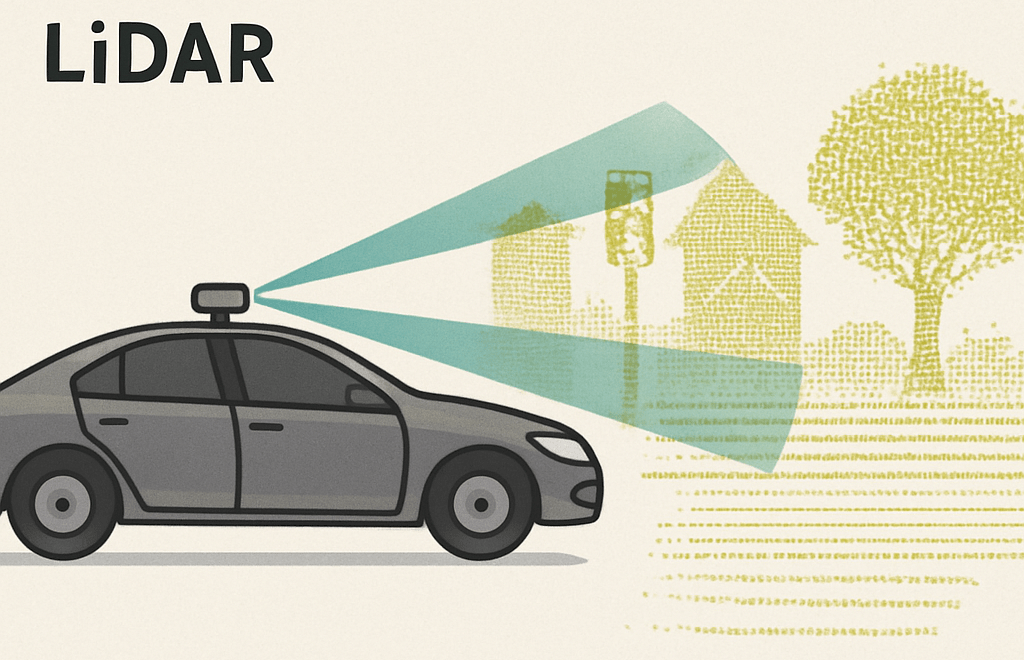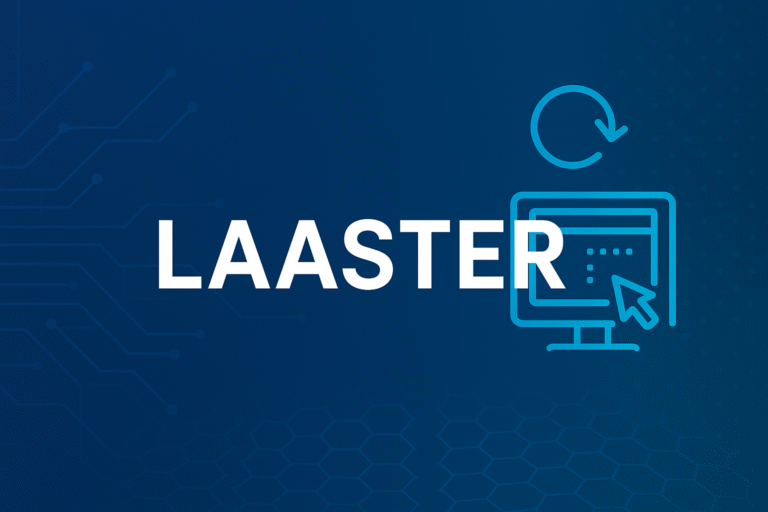
Lidarmos is a fascinating concept that merges technology with conflict management. It combines LiDAR technology with the art of dealing with conflicts. This integration is crucial in today’s tech-driven world.
LiDAR, or Light Detection and Ranging, is a powerful tool. It measures distances using laser light, offering precise data. Its applications span various fields, from mapping to autonomous vehicles.
However, with great technology comes inevitable challenges. É inevitável lidarmos com conflitos, meaning “it is inevitable to deal with conflicts,” is a reality in this context.
Understanding Lidarmos involves exploring these conflicts and finding solutions. This article delves into the depths of Lidarmos, its applications, and the importance of conflict resolution.
What is Lidarmos? Understanding the Core Concept
Lidarmos represents the synergy between LiDAR technology and the management of related conflicts. It derives its name from the integration of “LiDAR” and “MOS,” a management of systems approach. This reflects the dual focus on technological advancement and practical conflict resolution.
At its core, Lidarmos offers a framework for addressing the challenges inherent in using advanced technology. These challenges can range from technical limitations to ethical concerns. Understanding these aspects is essential for effective implementation.
The scope of Lidarmos involves several key components:
- LiDAR technology and its applications
- Conflict management strategies within technical environments
- Ethical and legal considerations in technology use
Each aspect contributes to a holistic understanding of Lidarmos, promoting balanced technological advancements. As LiDAR technology evolves, integrating effective management becomes increasingly vital.
Thus, Lidarmos is not just a technological concept but a comprehensive approach. It emphasizes the need for responsible and sustainable practices in adopting new technologies.
The Evolution of LiDAR Technology
LiDAR, short for Light Detection and Ranging, has come a long way. Initially, it was used primarily in meteorology and topographic mapping. Its ability to measure distances with laser light opened new possibilities.
Over time, advancements in LiDAR hardware and software have expanded its applications. The technology is now crucial in fields like forestry, archaeology, and autonomous vehicles. These developments have significantly enhanced the precision and utility of LiDAR.
Key milestones in LiDAR’s evolution include:
- Introduction of laser scanning for detailed mapping
- Development of mobile and aerial platforms
- Integration with geospatial information systems
Today’s LiDAR systems offer enhanced resolution and accuracy. This facilitates complex tasks, such as creating real-time 3D models. The reduction in cost has also made LiDAR accessible to more industries. As the technology evolves, its potential continues to grow, paving the way for future innovations.
LiDAR-MOS: Integrating Management and Sensing Systems
LiDAR-MOS represents the merging of LiDAR technology with management of systems (MOS). This combination allows for enhanced data collection and processing. It serves various industries by optimizing both resources and workflows.
Integrating LiDAR with management systems offers several advantages. These include improved decision-making and data analysis capabilities. Combining these elements helps in creating smarter, more efficient operations. Organizations can better adapt to changes and new requirements.
Key benefits of LiDAR-MOS include:
- Streamlined data management
- Enhanced system efficiency and productivity
- Better resource allocation
As industries embrace digital transformation, LiDAR-MOS becomes more important. This integration supports diverse applications, from urban planning to environmental monitoring. By leveraging LiDAR-MOS, businesses can stay competitive and resilient in an ever-changing landscape. The integration marks a significant step forward in utilizing technology for strategic management.
Key Applications of Lidarmos Across Industries
Lidarmos has revolutionized various industries with its versatile applications. Its ability to generate high-resolution data makes it invaluable. From urban planning to scientific research, it plays a key role.
In agriculture, Lidarmos enhances crop management and improves yield predictions. It provides precise information on soil and crop conditions. Farmers can make informed decisions and increase productivity.
The transportation sector also benefits significantly. LiDAR technology aids in developing autonomous vehicles by ensuring safe navigation. Detailed road mapping and obstacle detection are crucial for this advancement.
Some key applications of Lidarmos include:
- Topographic and forestry mapping
- Autonomous vehicle navigation
- Environmental monitoring
In environmental conservation, Lidarmos supports monitoring and managing ecosystems. It helps track changes over time, benefiting conservation efforts. Data from Lidarmos helps in planning and implementing sustainable initiatives.
Moreover, the utility sector uses Lidarmos for infrastructure monitoring. It helps detect faults and maintain system reliability. Lidarmos ensures that power lines and pipelines are functioning optimally. This proactive approach prevents costly downtimes.
Through these applications, Lidarmos addresses diverse needs across sectors. Its contribution to innovation and efficiency underlines its growing significance. The technology continues to evolve, offering new opportunities and solutions.
É Inevitável Lidarmos com Conflitos: The Role of Conflict in Technology
In the realm of technology, conflicts are often unavoidable. Different stakeholders bring varied perspectives and interests. This diversity can lead to disagreements and debates.
The phrase “é inevitável lidarmos com conflitos” means it’s inevitable to face conflicts. This is especially true in innovative fields like Lidarmos. Conflicts often arise due to rapid technological changes.
These changes can disrupt traditional processes and roles. Conflicts might also emerge due to ethical considerations or privacy concerns. Addressing these issues is crucial for progress.
Some common sources of conflict in technology include:
- Data privacy concerns
- Ethical use of technology
- Resource allocation
Communication and collaboration are key to conflict resolution. Involving all stakeholders early can prevent misunderstandings. Through open dialogue, lasting and effective solutions can be achieved.
By acknowledging and addressing conflicts, innovations can thrive. The challenge lies in finding a balance between technology’s potential and ethical responsibilities. Ultimately, embracing conflict as part of progress can yield significant benefits.
Conflict Resolution in Lidarmos: Challenges and Strategies
Resolving conflicts in Lidarmos involves several challenges. These challenges stem from the technological complexity and diverse stakeholder interests. Managing these conflicts requires strategic approaches to ensure smooth project execution.
A key challenge is aligning the objectives of various parties. Stakeholders may have conflicting goals or visions for a project. Finding common ground is essential for moving forward. Miscommunication is another frequent issue. Information gaps can exacerbate misunderstandings, leading to unnecessary conflict.
To tackle these challenges, employing effective strategies is crucial. Clear communication should be a priority. Establishing transparent and regular channels of communication can prevent misinterpretations. Bringing everyone to the table early helps too.
Here are some strategies for conflict resolution in Lidarmos:
- Facilitate regular stakeholder meetings
- Use neutral mediators when necessary
- Implement conflict resolution training
- Encourage open dialogue and feedback
Ultimately, proactive conflict management can transform challenges into opportunities. By addressing conflicts strategically, Lidarmos projects can benefit from increased collaboration and innovation. This approach fosters a more inclusive and efficient development process.
Ethical and Legal Considerations in Lidarmos
Lidarmos technology brings significant ethical and legal challenges. Privacy concerns are at the forefront, especially with detailed data collection. It’s crucial to address these issues to gain public trust and ensure compliance with regulations.
Legal frameworks for Lidarmos vary across regions. Navigating these regulations can be complex. Understanding the implications of data ownership and consent is vital for lawful operation. Companies must be diligent in their adherence to local laws.
Ethical practices can guide the responsible use of LiDAR technology. Here are key considerations:
- Ensure data is collected with consent.
- Protect sensitive information rigorously.
- Maintain transparency about data use.
- Uphold fairness in deployment.
Adopting these practices will ensure that Lidarmos technologies are used responsibly. Balancing innovation with ethical obligations will pave the way for sustainable growth in this field. By respecting both ethical and legal guidelines, Lidarmos can be integrated more smoothly into society.
The Future of Lidarmos: Trends and Innovations
The future of Lidarmos looks promising, driven by rapid technological advances. These innovations promise to expand the possibilities of LiDAR applications significantly. As technology evolves, we anticipate seeing new trends emerge across various sectors.
Upcoming advancements in sensor technology will play a critical role. These improvements will enhance data accuracy and usability. Additionally, integration with artificial intelligence (AI) will revolutionize data analysis and interpretation.
Emerging trends include the following:
- Enhanced AI capabilities for data processing
- Increased integration with other technologies
- Development of more portable LiDAR systems
- Improvement in real-time data collection
Innovations are also focusing on making Lidarmos more accessible and cost-effective. This shift will enable wider adoption across industries, from environmental conservation to urban development. As a result, stakeholders must prepare to embrace these changes and capitalize on new opportunities. The collaborative efforts between various disciplines will further push the boundaries of what Lidarmos can achieve. By staying informed and adaptive, industries can maximize the potential impact of these technological advancements.
Building Skills and Collaboration in Lidarmos
Developing expertise in Lidarmos is essential for leveraging its full potential. A skilled workforce can effectively navigate challenges and innovate solutions. Continuous education and training are vital components of this process.
Collaboration across disciplines enhances the effectiveness of Lidarmos. By fostering partnerships, industries can address complex issues more comprehensively. These efforts lead to innovative and sustainable solutions.
Key areas for skill and collaboration development include:
- Technical proficiency in LiDAR technology
- Understanding of conflict resolution strategies
- Interdisciplinary teamwork and communication
- Awareness of ethical and legal implications
Together, these elements create a robust framework for advancing Lidarmos. By investing in skill development and fostering collaboration, the industry can achieve greater success and impact.
Conclusion: Embracing the Potential and Responsibility of Lidarmos
Lidarmos offers immense potential for technological advancement and societal benefit. As we continue to explore its applications, responsible use becomes paramount. Balancing progress with ethical considerations ensures long-term success and acceptance.
Embracing Lidarmos involves recognizing its capabilities and limitations. By fostering an understanding of both, we can address conflicts effectively. This approach leads to more innovative and sustainable outcomes.
Ultimately, the future of Lidarmos depends on our collective efforts. Through education, collaboration, and ethical practice, we can harness its full potential. This journey requires commitment to using Lidarmos for the greater good, benefiting both technology and society.
You May Also Like: All You Need to Know About Bageltechnews.com


